Right in the middle of Georgetown’s Armenian street, popular with tourists, and hidden by stalls with souvenirs and drinks, is Mr. Tan Kok Oo’s shophouse. Despite its decrepit appearance, the place is famous among Penang’s locals. This is where Mr. Tan has been tirelessly making his famous Nyonya beaded shoes since 1970s.
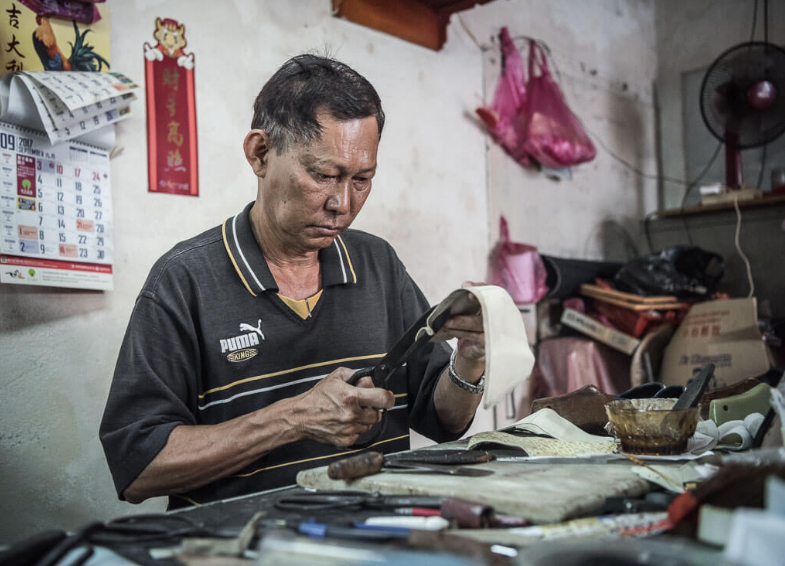
We found Mr. Tan sitting around a table cluttered with leather swatches, trimmings, pots of glue, wooden shoe lasts, scissors and hammers, pattern drawings, and bottles of beads. Put off by “No photos” policy implemented by one of the Nyonya beaded shoemakers in Melaka, we hesitantly approach the man. But, proud by his craftsmanship, he is open to visitors. “I am happy for people to come and see my shoes, and take photos to show to their friends,” he explains.
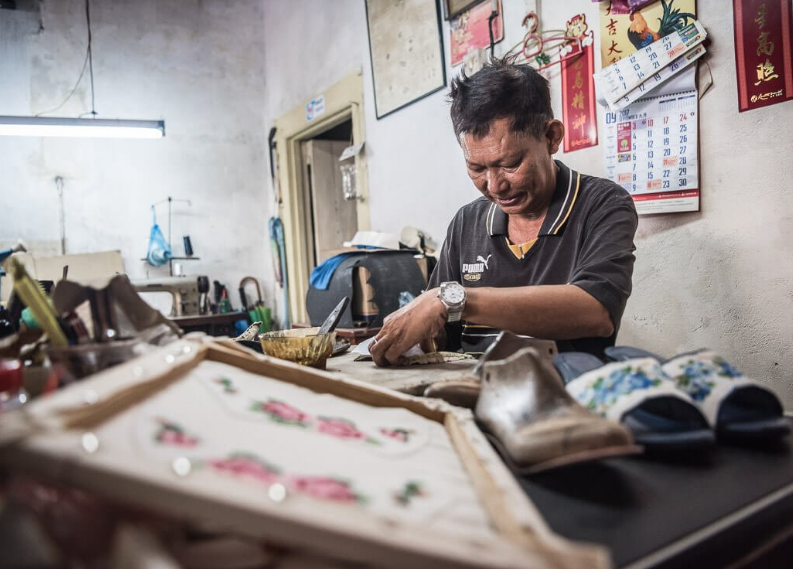
Mr. Tan momentarily disappears to come back with a pair of beautiful Nyonya beaded shoes he made for one client. Expressing the creativity of the shoemaker, the beaded pattern is intricate and ornate, and each pair of shoes is a unique creation.

Assembling the pieces of leather, Mr. Tan, who learnt the skills from his uncle, explains that making Nyonya beaded shoes is a time-consuming and tedious process, in particular, the beading. Because of its intricate design, it takes about three months to make a pair of Nyonya beaded shoes.
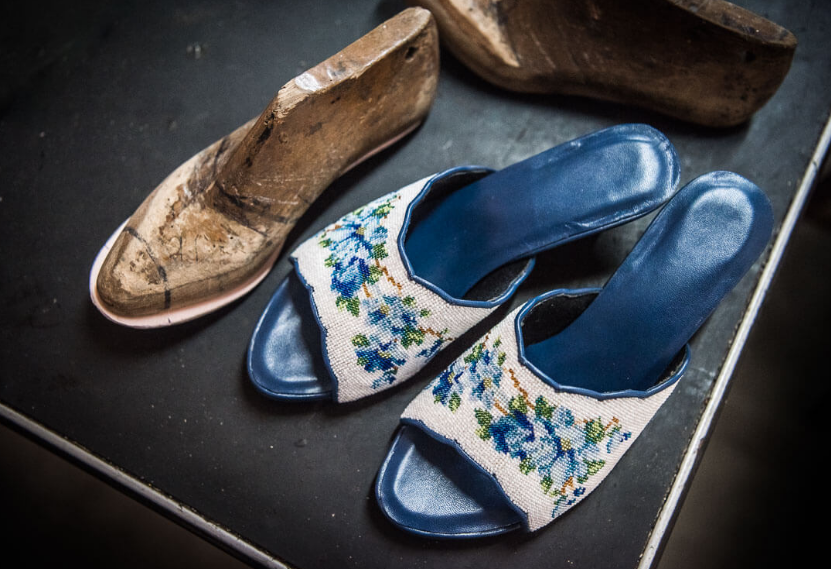

The art of making Nyonya beaded shoes originated from the Straits of Melaka in Malaysia. Beaded shoes, known as Nyonya shoes, Peranakan shoes, or kasut manek in Malay, are integral part of Nyonya culture. Nyonya are the descendants of early Chinese immigrants, who settled in Penang, Melaka and Singapore formed a unique culture, which is a mix of Malay and Chinese.

Nyonya women are known for their embroidery and beadwork, which they learn in their early age. If in the past, Nyonya beaded shoes were worn by both Peranakan men (Baba) and women (Nyonya), today, they are worn by women only. Symbol of status, women wear colourful beaded shoes for special occasions such as wedding, birthday’s celebration and Chinese New Year. For sad occasions, the shoes are made using beads of Chinese mourning colours – black, white or blue.
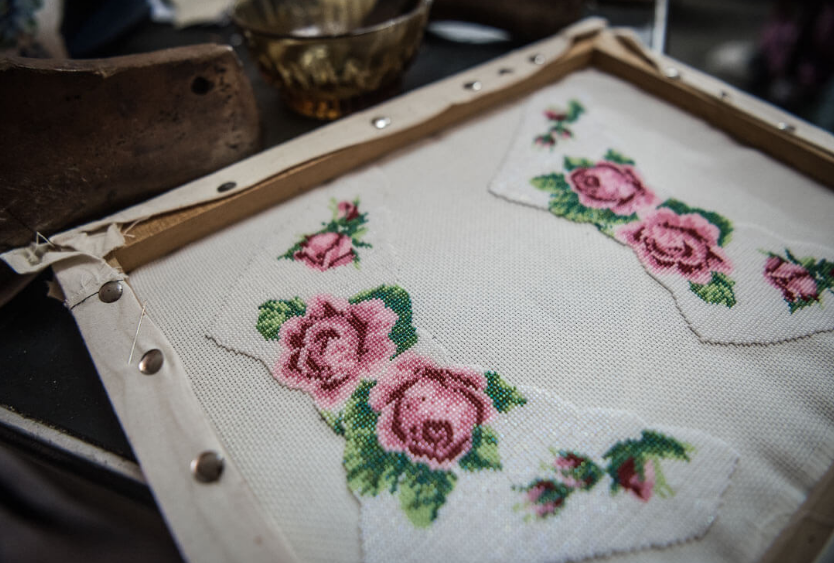
If Nyonya beaded shoes were popular back in the 1930s, today Mr. Tan barely breaks even despite high prices of shoes starting from USD180. But he does not compromise the quality by using expensive beads from Japan and natural leather from Singapore instead of now popular and cheap PVC. He has his regular customers ordering custom-made shoes, square, round, or pointed, made with low or high heels. They choose motifs from the catalogue or show to Mr. Tan their preferred pattern and colours for beading, soles and heels.
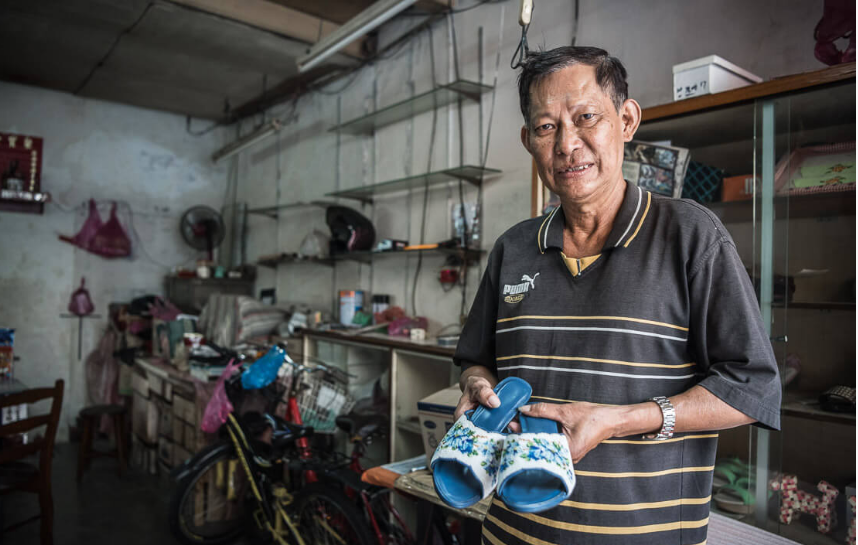
The Nyonya beaded shoes are not only beautiful and unique. They look like a piece of art. Unfortunately, their popularity is fading in favour of cheap but impersonal shoes. But some passionate Nyonya beaded shoemakers, like Mr. Tan, keep the tradition alive, and maybe one day the beaded shoes will become again a popular fashion trend.
According to www.anywayinaway.com




![[HONORARY DOCTORATE OF RECORD FOR PRACTICE AND EMPIRICAL RESULTS – 2017] LY THI MAI (HO CHI MINH CITY, VIETNAM)](https://aseanrecords.world/wp-content/uploads/2024/04/0_16-27_jpg_751-218x150.jpg)








